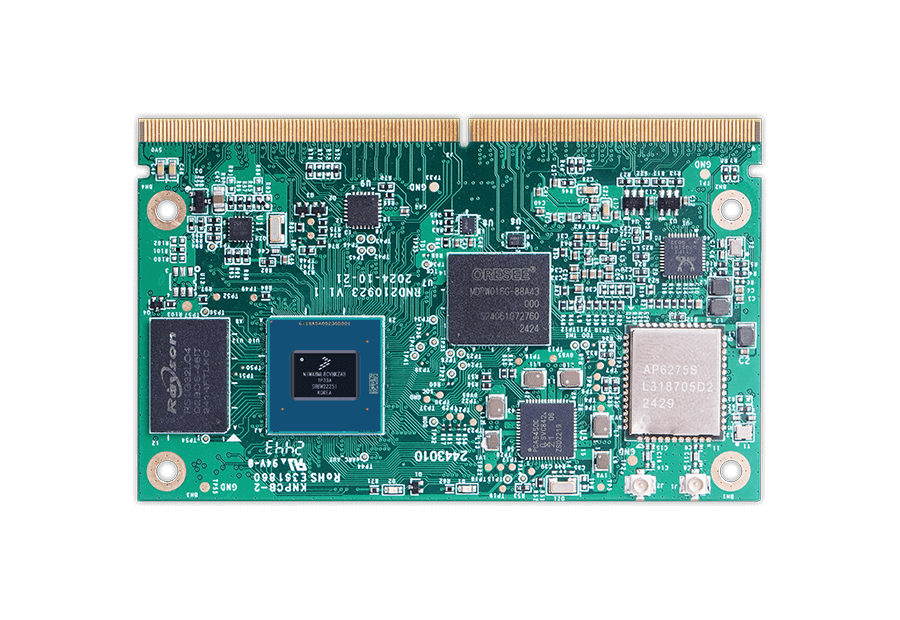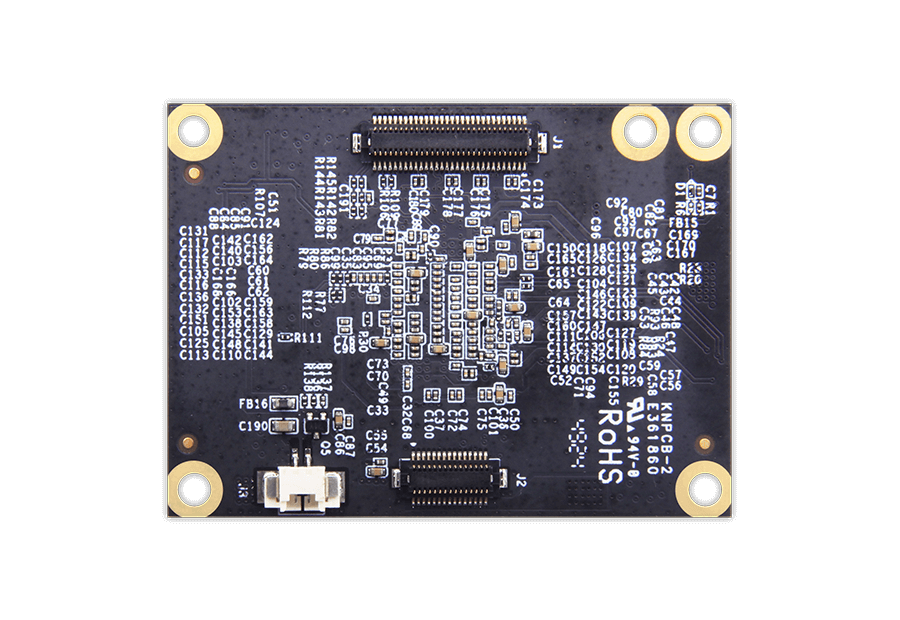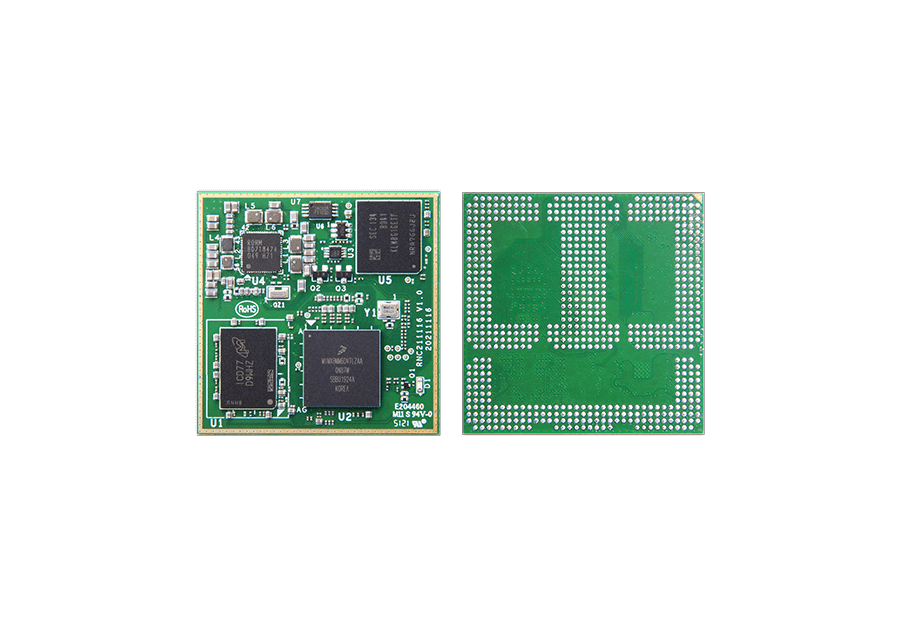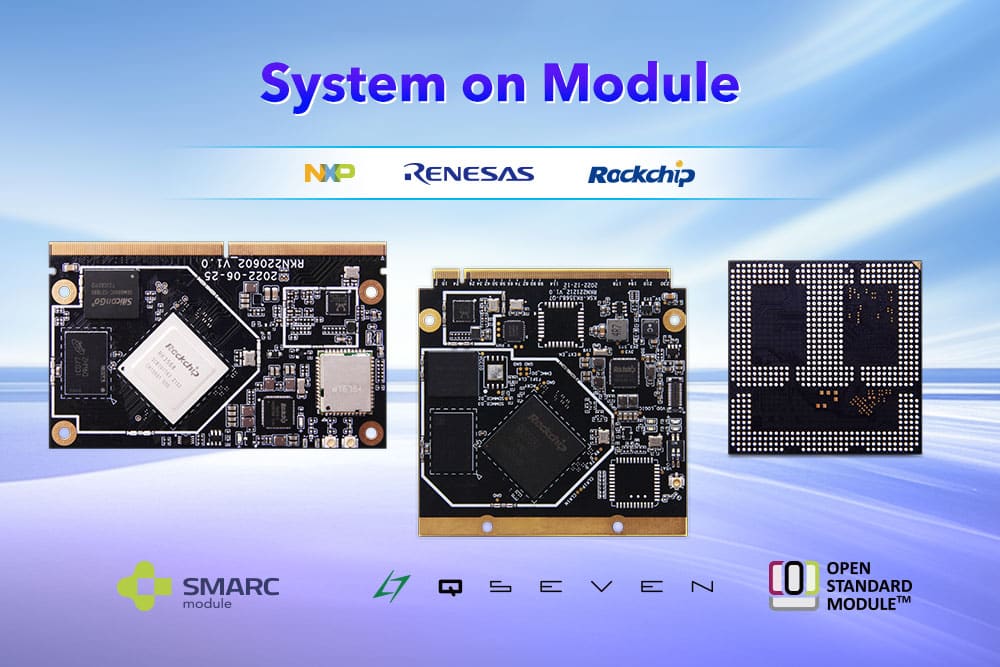System-on-Modules (SoMs) are compact embedded computing platforms that integrate the processor, memory, storage, and I/O into a single ready-to-use module. They reduce design complexity, accelerate time-to-market, and save development costs in industrial and embedded applications.
However, selecting the right SoM is more than a hardware choice—it directly affects your product’s development, functionality, manufacturability, and long-term lifecycle.
This guide outlines the key factors to consider when selecting a System-on-Module and its supplier.
Selecting the Right SoM
1. Define Your Application Requirements
Before comparing specifications, clearly define the functional, performance, and environmental requirements of your end product. Consider factors like:
- Processing performance
- I/O and peripheral needs
- Power budget
- Operating temperature
- Expected product lifecycle
This clarity helps narrow down SoM options and avoid over- or under-engineering.
2. Choose a Reliable SoC
The choice of processor (SoC) defines the core capabilities of the SoM. While many SoCs may appear attractive on paper, not all are suitable for long-term industrial use.
It’s advisable to prioritize SoMs based on mainstream, widely supported SoCs—typically from vendors with a strong track record in embedded and industrial applications. Avoid obscure or niche chipsets unless your project has highly specific requirements.
3. Assess Configurability: Memory, Storage, Interfaces
Many SoMs are available in different configurations for RAM, storage, and optional peripherals (e.g., Wi-Fi, Ethernet PHY). This flexibility can help optimize cost and performance for your application.
Check:
- What configuration options are available?
- Are they standard offerings or made-to-order?
- Does the vendor guarantee supply for your specific configuration?
4. Form Factor, Connector Type, and Carrier Board Compatibility
The SoM’s form factor affects integration, mechanical design, and future scalability. It typically falls into two categories:
- Standardized formats (e.g., OSM, SMARC, COM Express, Qseven): These offer compatibility across vendors and better ecosystem support.
- Custom designs (e.g., SODIMM-style, proprietary mezzanine connectors): These can be optimized for cost or performance, but lock you into a specific supplier.
System-on-Module connection type refers to the physical interface between the SoM and carrier board for power, data, and signals. It affects replaceability, design complexity, cost, and reliability. Common types include:
- Edge Connector — Also known as gold-finger or card-edge modules, these are commonly seen in standards like COM Express, SMARC, and Qseven. They’re easy to replace, but their edge connector results in a larger footprint and added thickness due to the connector height.
- Mezzanine Connector — Often referred to as board-to-board (B2B) modules, using connectors such as Hirose FX10/FX20 or Samtec QTH/QSH with 100–600 pins. They offer compact, robust connections and are well-suited for high-density or portable designs.
- Solder-down SoMs — Also called LGA or BGA modules, with examples including OSM and custom industrial formats. They are space-efficient and rugged, ideal for automated production environments, but cannot be replaced once soldered.



Choose a format that aligns with your carrier board design constraints and long-term maintainability.
5. Power Consumption and Thermal Design
Make sure the SoM’s power consumption fits your system’s power budget. Power usage varies by workload, so check whether the vendor provides detailed power profiles for typical use cases.
If your application involves sustained high loads, determine whether passive or active cooling is needed. Some vendors offer heat plates or heatsinks as standard accessories.
6. Software Support (BSP)
A complete and well-maintained Board Support Package (BSP) is essential. It should cover bootloader, kernel, and drivers for your chosen operating system (Linux, Android, RTOS, etc.).
Review:
- Whether the BSP is production-ready or just a demo
- The frequency of updates and bug fixes
- Quality of documentation and developer guides
Inadequate software support can significantly delay project timelines.
7. Long-Term Availability
Industrial products often remain in use for 7 to 15 years. Ensure the SoM you choose comes with a long-term availability guarantee—ideally at least 10 years.
Check if the vendor has formal lifecycle management policies in place and what notification periods they offer for EOL (End-of-Life) events.

Evaluating the SoM Vendor
Selecting a robust, reliable vendor is just as critical as choosing the hardware.
Vendor Reliability
Assess the vendor’s experience and focus:
- How long have they served the embedded market?
- Do they specialize in SoMs, or is it a side business?
- How many SoM families do they maintain?
Established vendors with a long-standing product line are more likely to provide stable supply and consistent support.
In-House Manufacturing
Vendors that manage their own production lines typically offer better control over quality, lead times, and supply chain risks.
In contrast, those who outsource production may face challenges during component shortages or geopolitical disruptions.
Documentation and Design Resources
Thorough documentation shortens integration time. At minimum, the vendor should provide:
- Hardware datasheets and schematics
- Carrier board reference designs
- PCB layout and 3D models
- Signal descriptions and pin maps
Pre-validated design resources help reduce bring-up risks and speed development.
Technical Support and Collaboration
Designing around a SoM often requires collaboration with the vendor. Verify:
- Is there a dedicated support portal?
- Are response times acceptable?
- Can you request design reviews or direct engineering support?
- Are services like schematic validation available?
Helpful, accessible technical support is especially valuable during prototyping and early production phases.
Certification Support
If your application needs regulatory certifications (e.g., FCC, CE, UL), your SoM may be subject to EMC and safety testing.
For wireless modules (Wi-Fi/Bluetooth), using pre-certified SoMs can simplify the certification process. Check whether the vendor can provide relevant documentation and test reports.
Final Thoughts
A System-on-Module is a foundational part of your embedded design. The right choice can simplify development, improve reliability, and future-proof your product. But beyond specs, success depends on the availability, support, and partnership offered by the vendor.
Choose wisely—not just based on features, but based on long-term viability.
